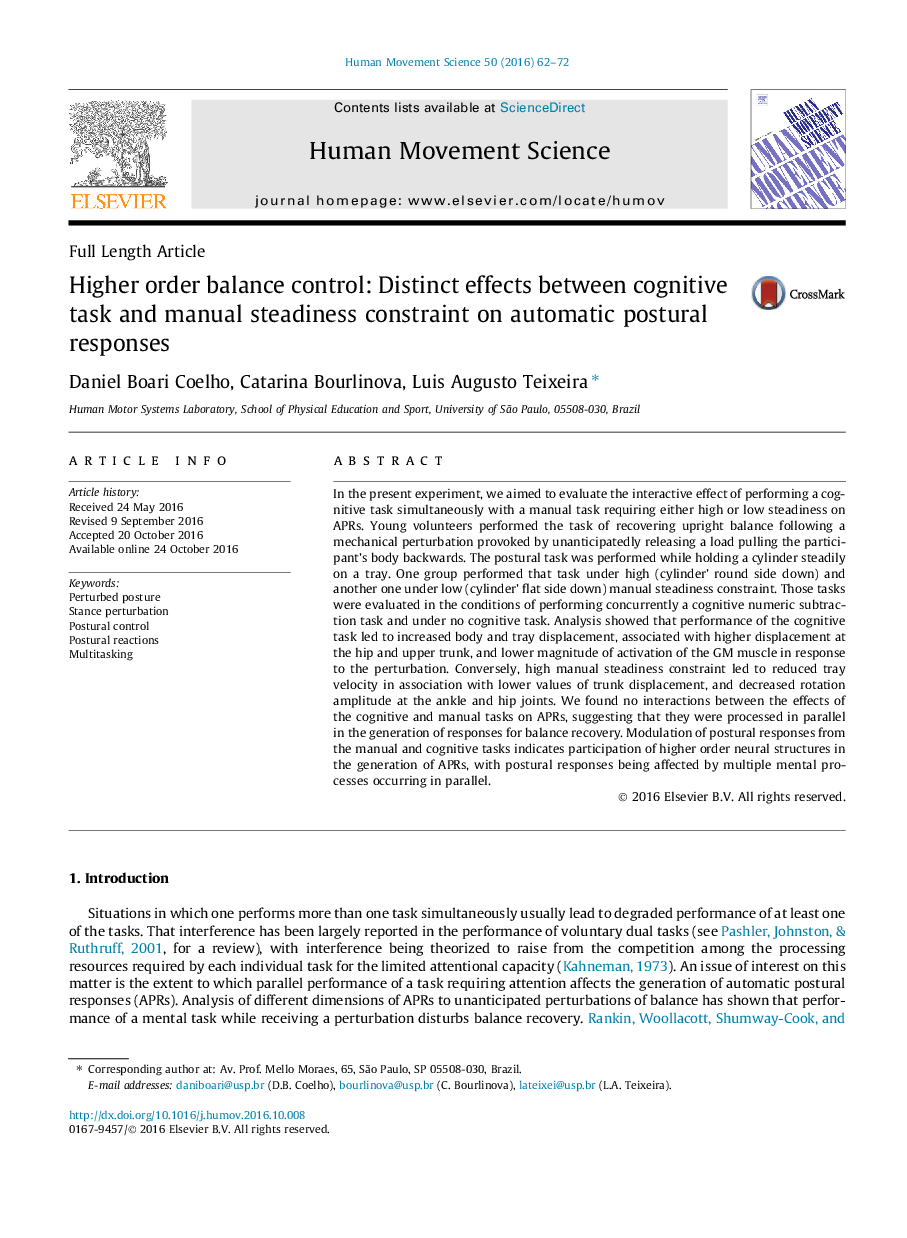| Article ID | Journal | Published Year | Pages | File Type |
|---|---|---|---|---|
| 5042044 | Human Movement Science | 2016 | 11 Pages |
â¢We perturbed body balance while performing a cognitive task and a manual task with distinct steadiness constraints.â¢Balance perturbation was produced by unanticipatedly releasing a load attached to the participant's trunk.â¢Performance of the cognitive task led to poor automatic postural responses to balance perturbation.â¢High manual steadiness constraint led to decreased body oscillation following balance perturbation.â¢Automatic postural responses were affected by multiple mental processes occurring in parallel.
In the present experiment, we aimed to evaluate the interactive effect of performing a cognitive task simultaneously with a manual task requiring either high or low steadiness on APRs. Young volunteers performed the task of recovering upright balance following a mechanical perturbation provoked by unanticipatedly releasing a load pulling the participant's body backwards. The postural task was performed while holding a cylinder steadily on a tray. One group performed that task under high (cylinder' round side down) and another one under low (cylinder' flat side down) manual steadiness constraint. Those tasks were evaluated in the conditions of performing concurrently a cognitive numeric subtraction task and under no cognitive task. Analysis showed that performance of the cognitive task led to increased body and tray displacement, associated with higher displacement at the hip and upper trunk, and lower magnitude of activation of the GM muscle in response to the perturbation. Conversely, high manual steadiness constraint led to reduced tray velocity in association with lower values of trunk displacement, and decreased rotation amplitude at the ankle and hip joints. We found no interactions between the effects of the cognitive and manual tasks on APRs, suggesting that they were processed in parallel in the generation of responses for balance recovery. Modulation of postural responses from the manual and cognitive tasks indicates participation of higher order neural structures in the generation of APRs, with postural responses being affected by multiple mental processes occurring in parallel.
Graphical abstractDownload full-size image
